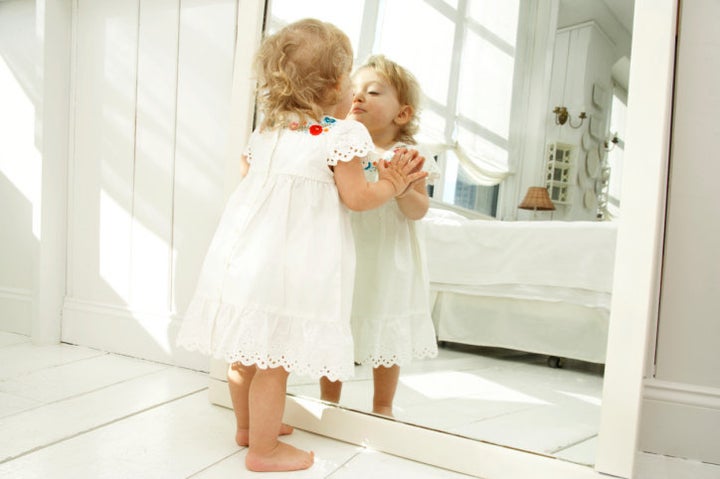
"'Testicles, Spectacles, Wallet and Watch": They say these are the quintessential points of the sartorial compass to be checked off daily by the British gent. Nora Ephron and Delia Ephron's new play, "Love, Loss, and What I Wore," explores the ladies' equivalent:
"Brassiere, Wedding Wear, Heels and Purse."
I am from England; we call a "purse" a "handbag," a "period" never involves punctuation, "panty hose" are "tights" -- and popular because it's always cold and we wore them at school. "Spanx" are more literally referred to as "hold-it-all-in pants" (that's our "pants" as in "knickers"). Terminology differs, but little else does.
Watching Ephron's charismatic and beautifully observed play makes you realize and celebrate that every woman everywhere faces a challenge with clothes, but it's a fight worth picking. There may be a limit to what you can do about the product -- so go for the packaging.
Five talented actresses sew together a ribald tale of ill-fitting bras and toe cleavage, brownie uniforms, paper dresses and Birkenstocks, "like the feet of a troll from middle earth" -- all stitched together with a loving, deprecating humour.
Indeed, during Ephron's infamous description of the problem of detritus of the purse, a glamorous young girl in the audience on my right began rocking, sobbing and snorting uncontrollably with laughter and what could only have been primal recognition. It was an outburst better suited to the therapist's couch than Row E. Of course, I'd have offered her a hanky but my handbag was too full of "crumbled tobacco, leaky pens and old boarding passes" to find one.
Actress Kate Mulgrew delivers a real corker on the subject of being touched up by those vigorous ladies in bra fitting rooms who always tell you your bra is solar systems away from the size it should be. A scientific conundrum is then created because, if you buy the bra they tell you, by the time you wear it for the next fitting you're light years out again.
Oh, as we say in England, the grass is always greener in somebody else's bra.
I relished Adriane Lenox's tale of the semi-deflated blow up bra, it reminded me of a friend who needed to dry her bra quickly before school so microwaved it. Her father spent an awkward morning picking off melted plastic underwiring from the inside of the microwave with a spoon.
Ultimately, clothes serve as a metaphor for the imprints, relationships and memories of women. The textures described are the textures of feminine connections, in all their coarseness, softness, prickliness, slinkiness or comfort. The designs are the cuts of the roles and feelings we move through: a poodle skirt, a Diane von Furstenberg emerald green wrap around, a shapeless black number.
Karen Carpenter's deftly directed choral repetition brings home the timelessness of this fabric of womanhood: growing, exploring, sexuality, pregnancy, illness, aging and how clothes allow us to find, hide, flaunt, flout, shape them. A lifetime of packaging examined by Ephron from the heart beneath.